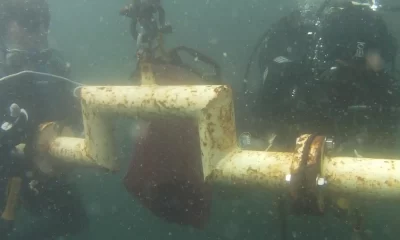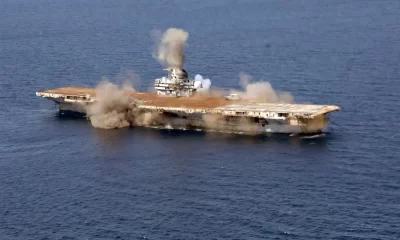Diving Safety
What is the Risk of Running Out of Gas?

by Peter Buzzacott
Header photo by Kirill Egorov
See companion story: Why Do Divers Run Out of Gas?
In short, it is not known with any degree of certainty what the current risk is for running out of gas. Even so, for perspective, it may be possible to “guestimate” the probability within an order of magnitude. None of what follows would make it into any science or medical journal, but let’s look at some numbers purely for the purpose of having a conversation.
Between 1995-2004, Project Dive Exploration recorded 52,582 recreational dive profiles, made by 5,046 adult divers, an average of ten dives per diver.5 I’ll come back to that later. Complete data was obtained for 4,711 divers and running out of air was reported by 65 (1.4%) of those divers, or 1 in 72 divers. But, when estimating the frequency of something happening to people, it is customary to include a time component, such as “1 in 72 divers per year,” and in this case, we do not know how long each diver participated in the study. If they were all enrolled in the whole 10 years then we might say “1 in 720 divers, per year” (times 10 years would give 10 in 720, or 1 in 72, divers per year). Describing the risk or probability of running out of gas in these terms is how insurers work out what to charge for an annual premium, based on the risk per person, per year.
For divers, however, many of us are more interested in the risk per X-number of dives. Looking back at that average of 10 dives per diver over an unknown time period of participation in the study raises the question: how many dives does the average diver make each year? Well, between 2006-2015, a population survey company in Florida surveyed 383,389 people around the US, and those that dived reported making an average of ten dives each during the previous year.12 That might be accurate if, for example, most people only make a few dives each year but a small percentage make hundreds of dives every year.

The same study estimated that about 1.1% of the US adult population scuba dives each year, and that US divers make about 30-31 million dives each year.12 This introduces another grey area; not all those dives were likely made in the US, and also there are many dives made each year in the US by visiting international divers. So, it is not as simple as saying there are 30 million dives made by US divers each year in the US. We just do not know what that number is.
Nonetheless, let’s forge onward with this exercise, in the interest of better understanding the issues preventing us from determining a firm estimate of risk. Among the 52,582 Project Dive Exploration dives, n=86 (0.16%) reportedly ran out of gas. Looking next at fatalities, in the last four DAN Annual Diving Reports there were 240 North American diving fatalities reported, 91% of those (219) were in the US or involved US divers.13-16 Of all the North American recreational diver fatalities, 16 were identified as either running out of gas at depth or else the mechanism of injury was “insufficient gas,” with (all else being equal) 15 of those (91%) likely to have occurred in the US or to have involved US divers.13-16
What can we learn from the above figures? Well, not much, because of the vagaries I’ve already described; plus, the above studies were conducted in different locations, likely involved many divers not resident in the US, and spanned different time periods. Even if all the above related to US divers in recent times, that still wouldn’t mean the same conclusions could be drawn about divers from other countries. But, if we were to make a fanciful estimate, for example because we were desperate for a number, even a wrong number based on false assumptions, then this is what someone else might say [comments in square brackets highlight problems with each assumption]:
- There could be ~30 million dives in the US each year [we don’t know this, but it might be true]
- ~0.16% of these might run out of gas [we definitely don’t know if this is true, and it seems high to me]
- This equates to 1 in every ~600 dives [again, seems high to me]
- ~0.16% of 30 million equals ~49,000 times US divers run out of gas each year [seems like a lot to me]
- There are, on average, ~4 out-of-gas fatalities in US divers each year [there are likely more, but not all fatality reports have complete data, so all we can say here is “at least 4 each year”]
- If all the above were a true reflection of US recreational divers today, [which it is likely not], then on average US divers would run out of gas once every ~600 dives, but this would be fatal only once every ~13,000 times divers run out of gas [I’d suggest running out of gas may be fatal more often than this].
- Regarding how often running out of gas results in injury, we have no data on this at all.
If nothing else, the above highlights that we need more data. We need prospective data from large dive operators, maybe air-integrated dive computer manufacturers, web-based dive log software managers, and recreational technical divers. If anyone reading this has useful data then I invite you to submit it for peer-review and publish it in a diving medicine or science journal. Until we get more data, please take the above with a grain of salt and consider it a conversation starter.
See companion story: Why Do Divers Run Out of Gas?

Dr. Peter Buzzacott MPH, PhD, FUHM, is a former PADI Master Instructor and TDI Advanced Nitrox/Decompression Procedures instructor, having issued >500 diver certifications. Today he is an active cave diver, holding various advanced cave diver certifications including advanced (hypoxic) trimix diver, and he is gradually gaining experience with CCR diving. To finance this, he conducts research into diving injuries and decompression/bubble modeling at Curtin University in Perth, Western Australia.




















































